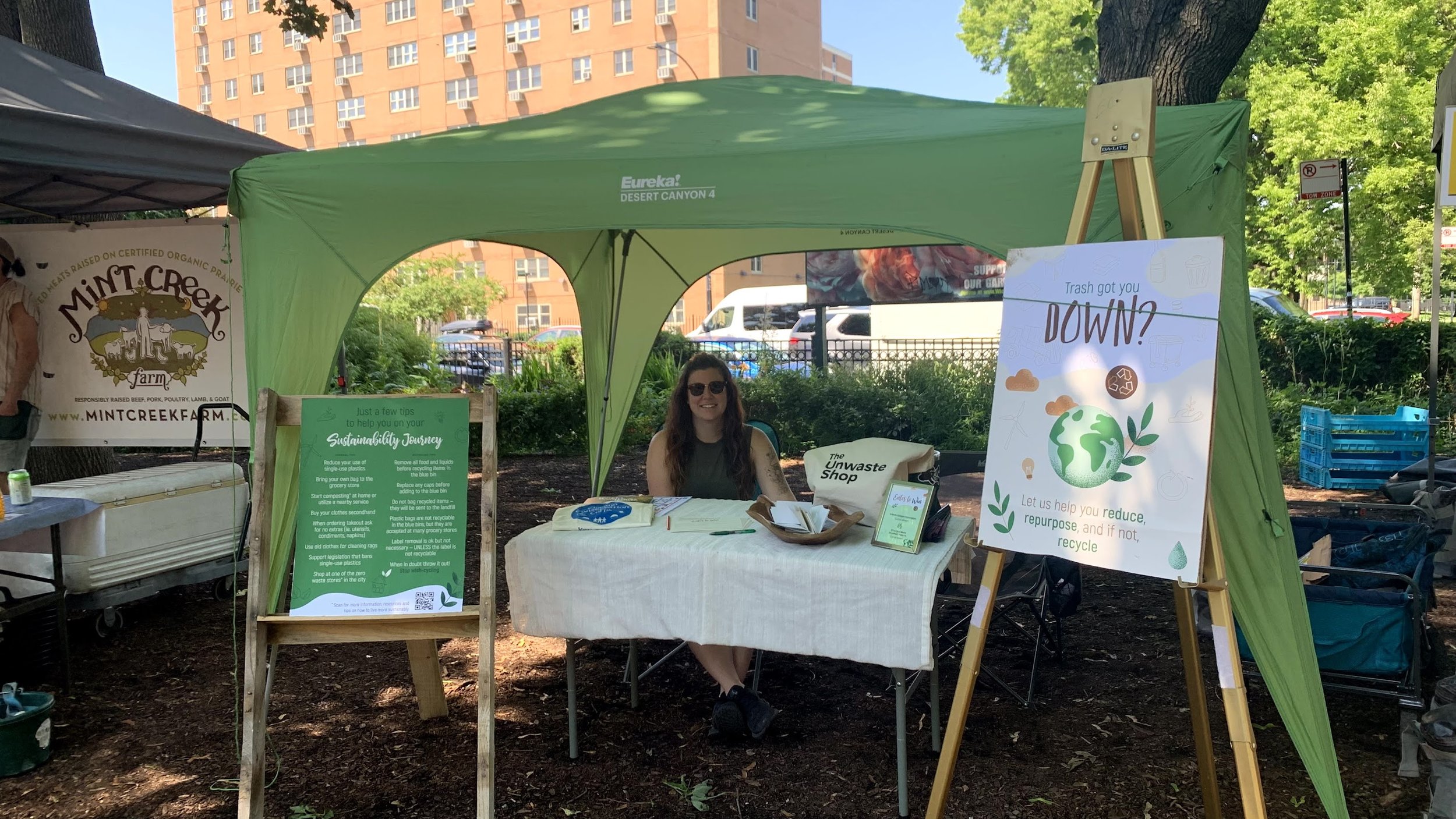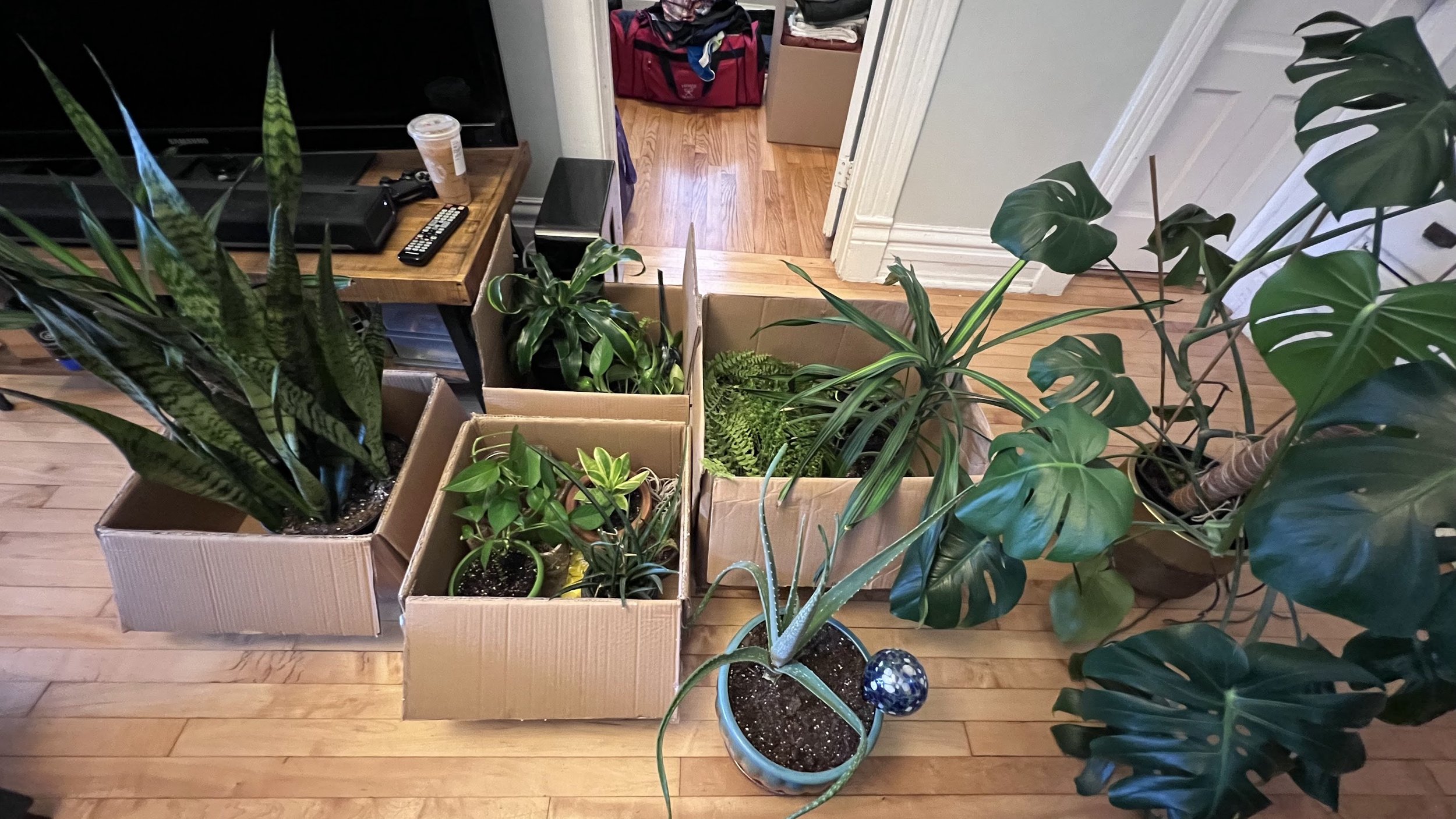8 Tips to Sustainably Declutter and Move
It's officially moving season in Chicago (and it’s time to get that junk out of your trunk) !
The moving trucks are out, and the discarded items are everywhere. The thought seems to be that it is much easier (and cheaper) to toss said items to the curb. With the rise of throw-away culture and one-click purchases we are losing the connection with our items.
This loss of connection stared me right in the face when my partner and I decided we were going to hit the road. That meant downsizing from a 1,000 square-foot two-bedroom apartment in Wicker Park (my largest home yet) into a whopping 150 square-foot camper trailer(!).
An 850 square-foot downsize meant sorting through every single item — including these color changing spoons, an impulse purchase from a few years back.
These spoons came to be in my possession during a particularly rough Chicago Winter that was dragging my friends and I down. To boost everyone's spirits we decided we were going to have a cereal party. Everyone was to dress in their pajamas, bring their favorite box of cereal, a variety of milks, and we would watch our childhood cartoons. It was a great time, and as great of a memory as it was, these color changing spoons didn’t make the cut for our new life on the road.
A few years prior to the big move, I began my sustainability journey by joining the Chicago Conservation Corp (C3). A 20+ hour training program that teaches participants about urban environmental challenges, opportunities, principles and skills in five subject areas: water, energy, green space, waste, and community organizing.
It had always been a passion of mine to be an environmentalist, and this was the first step to gaining the tools that I would need to do something about that passion.
Joining Cleanup Club Chicago and Chicago Environmentalists shortly after that, I knew I had found my community. A community of people that cared and did whatever they could to reduce their impact on this earth, to be a steward for the environment and walk as lightly on this planet as possible.
I slowly began to make changes in my life and helped supply the tools and information for others in my circle to do the same. Providing encouragement and support only, because no one is perfect, and it can be difficult to live a zero-waste lifestyle. All you can do is try and offset the things that are wasteful and replace those habits as quickly as possible.
As it turns out, downsizing and identifying new homes for a large portion of our belongings (in the most sustainable way possible of course), would prove to be my greatest challenge yet.
Well before this adventure was even confirmed, I began to sort through our things. Once, twice, three times combing through, each time only able to let go of a few items. I had grown attached to these things that I have had for so long, always thinking. “I will use this”, “I will wear it someday”, “This will fit me eventually”, etc.
Even though I had severely reduced my purchases, I had also started a collection of items that could eventually be recycled or reused. Which, to my partner's irritation, meant I had a bulk of items like glass jars, plastic yogurt cups, plastic silverware (that I had begged the takeout place to not give me but would still wind up in my bag), empty candle containers, ripped clothes and so on.
Finally, as our plans solidified and the reality set in that we would be able to move into a camper and hit the road, I realized that we would need to get rid of so much more.
The Journey Through Sustainable Decluttering
How do you get rid of an entire apartment worth of items when it requires hours of communication and coordination? Moving sustainably had become our part-time gig.
Here’s what we did:
We sold as many items as possible on Facebook marketplace. It was a lot of coordinating and sorting through spam messages, but we had enough successes to keep us motivated.
Once we had exhausted the sales items, the Buy Nothing posts began. Each week we would post a new set of images that were cataloged, tracked, and managed in the hopes that someone in our neighborhood would need each item.
Next we sorted and grouped our remaining items (things like used/broken electronics, cords, random school supplies, a majority of which I had accumulated from college more than ten years ago).
And distributed them to local organizations such as Sustainability Market by Reduce Waste Chicago in North Center, Best Buy, the City of Chicago Recycling Drop-off Center, Brown Elephant for random leftover items, and Chicago Textile Recycling for scrap cloth.
Even though it was a lot of work I am extremely grateful that in the city of Chicago we have access to countless resources to sustainably reduce and move. An exhaustive list of resources can be found on the Chicago Environmentalists website, our green pages for the city, and in our community group on Facebook. Be sure to peruse our many webpages (like the Reuse and Recycle pages) and let us know via the forms at the bottom if there are any additional resources.
These days you can catch me on the road trying to live more responsibly, entering, enjoying, and lightly walking through the communities that have welcomed us along the way. I have become much more conscious of each item that now comes into my possession, aware of the burden of its afterlife.
Stay tuned for more on how we have been living sustainably from the road. In the meantime, here are 8 tips to help during this move out season.
8 Tips to Sustainably Declutter and Move
Plan Ahead
The more time you have, the better you will do in reducing waste and staying organized (start eliminating as soon as possible).
Donate, Gift, Recycle and Sell
Sort your items into piles; keep, donate (recycle/gift) and sell
Identify items that your community might want or need
Utilize your neighborhood Buy Nothing Groups on Facebook (some are called Free Box)
List items on Facebook Marketplace, Poshmark, thredUP or LetGo
Source Pre-Used Boxes and Bins
Source boxes from BoxDibs or your neighborhood Buy Nothing Group
Post in your Buy Nothing Groups ISO (in search of) plastic bins to store and move your items with, these can in turn become storage for your new home.
Use Eco-Friendly Packing Materials
Save tissue paper and kraft paper from purchases throughout the year to help with moving.
Use cardboard/kraft tape when necessary to secure your boxes.
Use dishcloths, towels, blankets, and old clothes to cushion your items (instead of packing peanuts and bubble wrap).
Dispose of Chemicals in an Eco-Friendly Way
Contact the Household Chemicals and Computer Recycling Facility to dispose of any hazardous materials, their website details what they accept as well as their hours of business.
Move as Green as Possible
If you are not hiring movers, make as few trips as possible to cut down on fuel emissions.
If you are hiring movers, try and hire movers who are committed to green moving practices. Check our list of green moving companies for recommendations.
Recycle any Additional Supplies After the Move
Save as many boxes as you can to return the favor, post them on BoxDibs or Buy Nothing for someone else to use.
Make Your New Home as Green as Possible
If your home needs a good cleaning look for eco-friendly and plastic free products like Meliora Cleaning Products.
Ready to repaint? Head over to EarthPaint for a sustainable recycled paint product.
Check out local resale shops if you are looking to furnish your new home.
Identify your neighborhood Block Bin so you can start composting.
If you need to hang a picture, saw some wood, or sew new curtains head over to the Chicago Tool Library to borrow some tools.
When looking to find new favorite spots to eat at in your new neighborhood, find a restaurant on our “Most Sustainable” list.
Moving, packing, and relocating can be stressful, you don’t need the added eco-stress of having to throw away all your stuff. Chicago Environmentalists (and so many other organizations) are here to help you sustainably declutter and get rid of all your stuff in a responsible, stress-free way.
ARTICLE WRITTEN BY
Kara Cooke, Art Director and Website Manager of Chicago Environmentalists.





